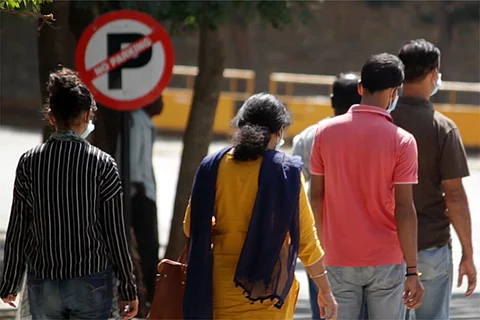

In India, over 160 persons have tested positive for the novel coronavirus, and the numbers seem to be increasing still. While we know that the disease is highly contagious, the Indian Council of Medical Research (ICMR) says India is still in stage two of the transmission. But what are these stages, and what does it mean?
ICMR says that there are four stages of COVID-19 transmission.
Stage 1: When the disease is just introduced to a population. In India’s case, that is with imported cases – only those with travel history to affected countries tested positive for the infection.
Stage 2: This is the stage that India is at right now, according to ICMR. This is when there is local transmission of the disease – some of those in contact with persons with travel history in turn get infected.
Stage 3: In this stage, there is community transmission i.e. even those who have had no known contact with an affected person, and haven’t travelled to an affected country start contracting the coronavirus disease. According to the Centre for Disease Control and Prevention (CDC), community spread is when “people have been infected with the virus in an area, including some who are not sure how or where they became infected.” This stage makes it difficult to break the chain of transmission, thereby making the disease harder to contain.
Stage 4: The fourth stage is when there is a widespread outbreak, leading it to become an epidemic within the population and difficult to contain.
The World Health Organisation (WHO) in a March 8 release had also called for preparedness for the stages of transmission, although a little different from the ICMR’s categorizations. According to WHO, the first stage is one where there are no cases. The second is when there are sporadic cases – one or more, imported or locally detected. The third stage is when clusters of cases emerge in a time, geographical location and/or through common exposure. And the fourth stage is community transmission, which is defined as “larger outbreaks of local transmission”.
ICMR has confidently stated that India is only on stage two, and that it will get to know if community transmission has started. ICMR had first tested samples from 20 people with respiratory issues randomly some weeks ago to check if there was community transmission; however, all of them returned negative for COVID-19. It has also intensified random sampling of people with symptoms of the flu or severe acute respiratory infections, even if they have no travel history to coronavirus-affected countries. ICMR has also said that the next two weeks are crucial for India to prevent the spread of the virus so that it doesn’t progress to stage three of transmission.
However, some question the claim that India has not reached the community transmission stage.
WHO in its March 12, 2020 situation report on COVID-19, classified India – like Italy and China – as one of the countries with ‘local transmission’ of the disease. However, WHO, unlike ICMR, does not differentiate between local and community transmission – the latter is defined as simply larger outbreaks due to local transmission. By WHO’s assessment, community transmission has already started in India.
Experts have pointed out that India is simply not testing enough which is why the number of people identified to be infected is relatively low. “We just haven’t tested a representative sample that the country’s population of 1.34 billion demands,” Ramanan Laxminayanan, director and senior fellow at Center for Disease Dynamics, Economics & Policy, told Hindustan Times.
Further, countering ICMR’s claim that there is no evidence to suggest community transmission in India yet, Yogesh Jain, a community doctor in Chhattisgarh wrote for The Caravan, “absence of evidence is not evidence of absence.” He also argued that India’s rate of testing – which is fortnightly or weekly – is abysmally low, and must move towards more frequent or daily testing and assessment.
He also says that the distinction being made between local and community transmission (stages two and three), is misleading because locals who are in touch with an infected person are part of a larger community of their own as well. He says that the WHO’s classification – imported cases, and local transmission – is more effective.
Meanwhile, Maharashtra has the highest number of people who have tested positive for the novel coronavirus in the country at 47. Telangana recorded seven new cases on Wednesday night - all Indonesians, bringing the total in the state up to 13, including one person who has recovered.